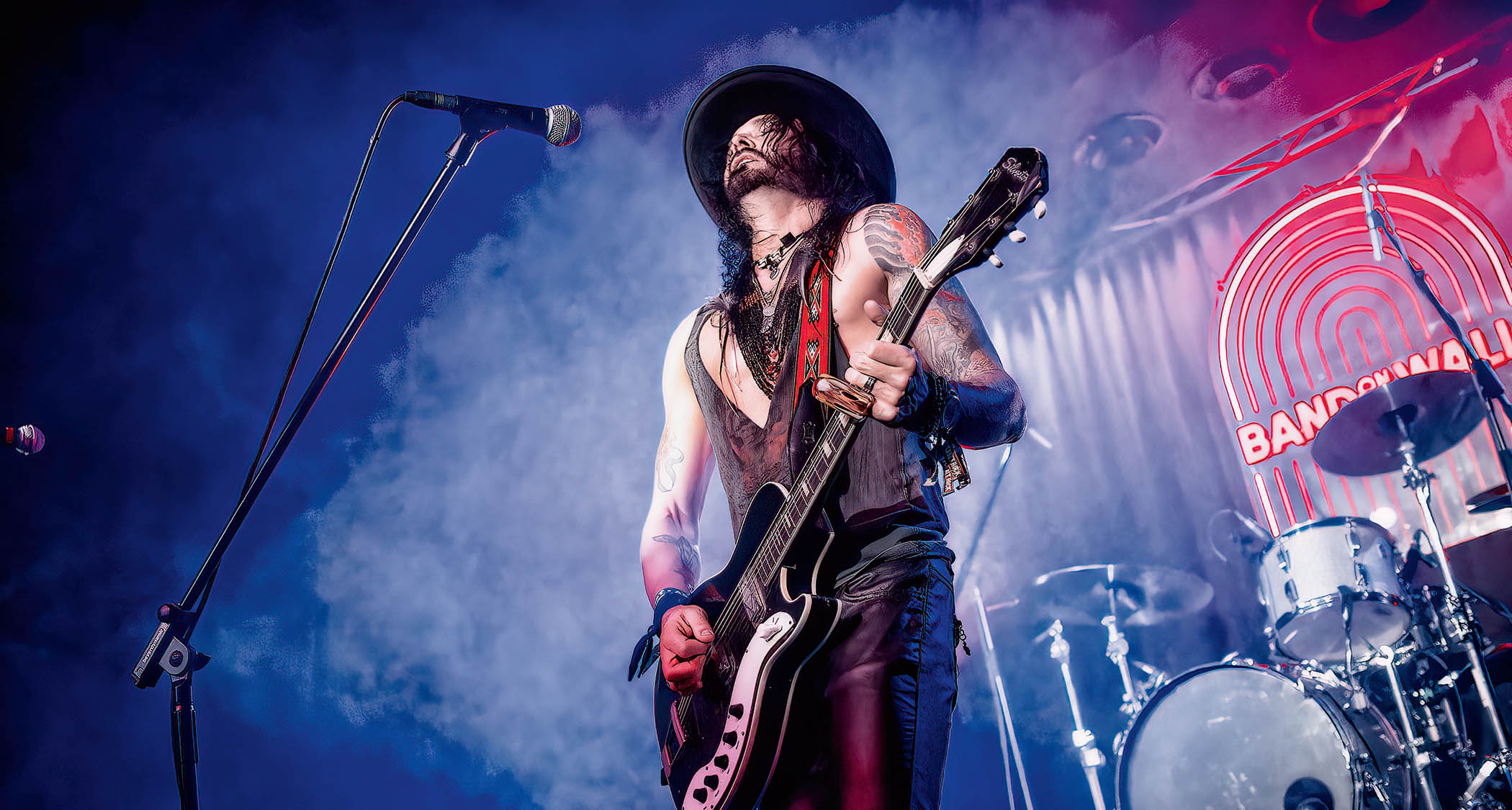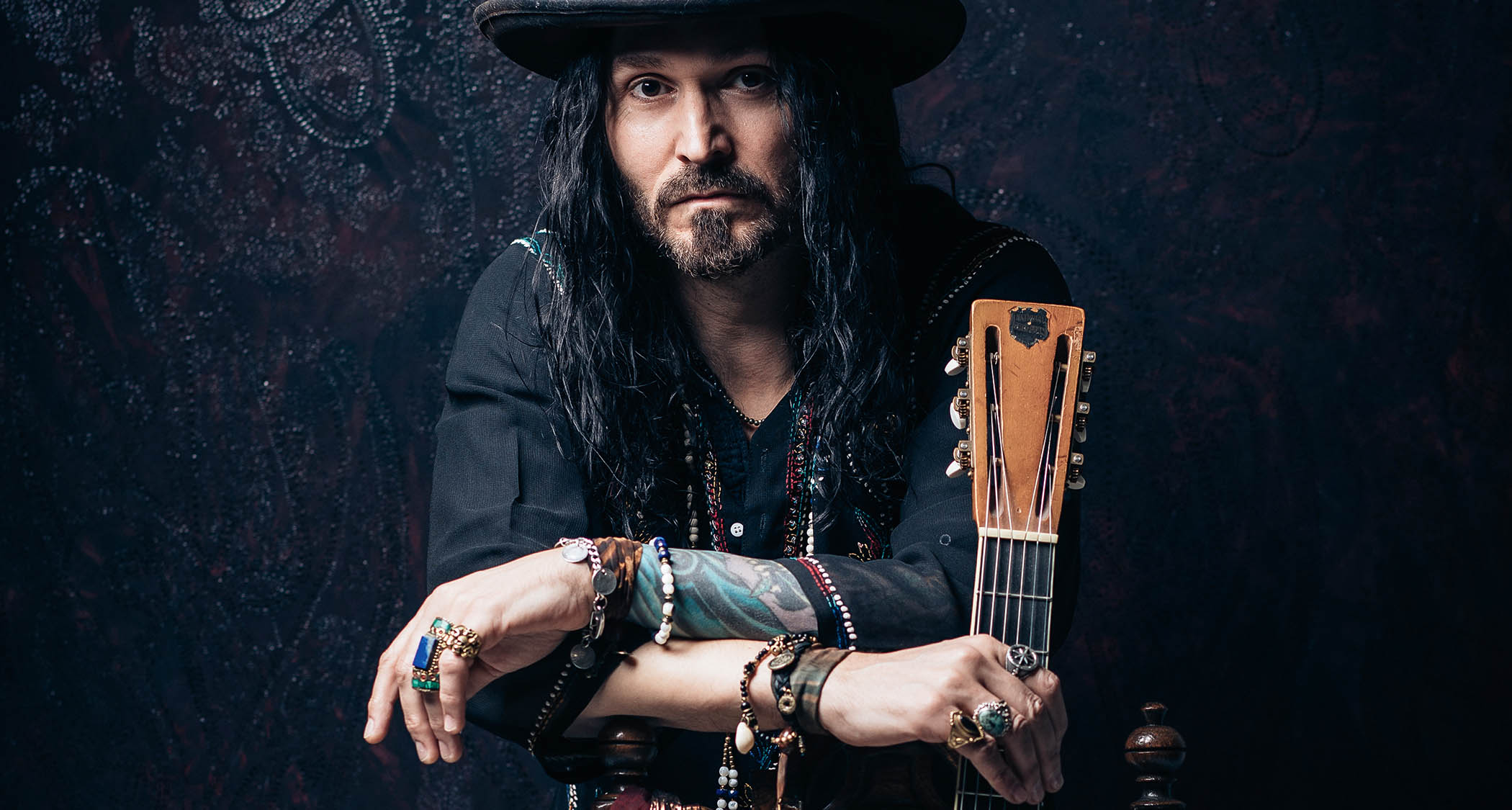
Troy Redfern is not a player we would associate with the extended-range shred potential of Steve Vai’s paradigm-shifting Ibanez Universe. Listening to the sound Redfern has cultivated over the years, rooted in old-school tones, a 7-string guitar with a double-locking vibrato seems like overkill.
But in this instalment of Bought & Sold, he admits that, if you’re talking gear regrets – the one you wished you’d never let go – then the Universe still hurts, even if he has outgrown it musically.
Elsewhere, he discusses his preferences for fat necks, and how Gibson turned him onto the baseball profile of the ‘50s, and answers the age-old questions in guitar; humbuckers or single coils?
What was the first serious guitar you bought with your own money?
“I had a couple of guitars when I was a teenager, but my dad helped me get me a bank loan for a white Ibanez Universe. I was 17 and I desperately wanted a multi-coloured one when I was a kid. I was a huge fan of [Steve Vai’s] Passion And Warfare, a complete casualty of that album.
“I had that guitar for 10 years and loved it and I completely regret selling it, but I kind of moved on musically and felt that it was the wrong instrument. But it was a big mistake, getting rid of it.”
What was the last guitar you bought and why?
“The last guitar I bought was a Teisco SSL 4, a ’63 – one of the higher-end models back in the day, it has four Gold Foil pickups and a big switching system with six switches. I’m a fan of Gold Foils for recording – to me, they’re the best‑sounding pickup across the board.
“And to have all those switching combinations was something I really wanted. It feels great, plays great, has a huge baseball-bat neck, solid mahogany body. Just a really solid instrument. You think of those instruments from the ’60s as being kind of weak and a bit lightweight, but this is the exact opposite: it’s a heavyweight instrument with fantastic tones.”
What’s the most incredible find or bargain you’ve ever had when buying guitars?
“There are two things, actually. I bought a Vox AC30 from 1964 and I think that was £300. It was from a friend whose partner had died. She knew it was worth a lot more than that, but she wanted me to have it as a sort of memory of him. Also, I would say, my Silvertone Jupiter, the ’62.
“I bought that about 20 years ago and I think it was about £500 back then. These days, those things can be £1,500 upwards. The prices in the last few years have gone up massively on those old Silvertones. So that was another bargain, back in the day.”
What’s the strongest case of buyer’s remorse you’ve ever had after buying gear?
“I mentioned buying the Ibanez Universe when I was a kid, but about 10 years later, in about 2000, I decided to part‑exchange it for a Fender American Standard Telecaster. And that was just the most soulless, anaemic guitar I think I’ve ever played.
“II don’t know if it was something to do with [those] guitars around that time, but it had an absolute zero vibe. I don’t think [Fender’s] standards are like that now, but around the back end of the ’90s, early 2000s, I think the guitars were a little bit lacking in mojo.”

Have you ever sold a guitar that you now intensely regret letting go?
“I had a Harmony Stratotone that looks very similar to the Silvertone Jupiter, body shape-wise. It was natural wood, two Gold Foils, and I remember I needed to make a video for a single I had out at the time. This was a long time ago, probably 2016, and I didn’t have any money and I felt that the video needed a Gretsch.
“I don’t know why, but I just felt that it was kind of a rockabilly type tune. I looked around and I hadn’t used this Harmony for a while and I thought, ‘Okay, I’ll part-ex that.’ That was a big mistake because the Gretsch only lasted maybe a month and I got rid of it.
“Those Harmony instruments from that era had a very distinctive tone in comparison to the Silvertone. I don’t know whether it’s the way those pickups age over time or something, but there doesn’t seem to be a standard tone from those guitars. I think it’s quite random. But there was something very different about that one.”
What’s your best buying tip for anyone looking for their ultimate guitar?
“Personally, I would say – and it’s kind of an obvious statement – that you need to try the guitar and physically play it, if possible, to get how the neck feels in your hand. Because, to me, the way your left hand feels on the back of the neck and the fingerboard is everything, you know? The way it feels in your hand is essential for [enabling] a guitar to connect with you.
“Once, I went to a shop and tried a Gibson Custom Shop R7 [Les Paul] and it had a ’50s neck, and from that moment on I was turned over to baseball-bat necks. I absolutely love a huge neck and so going to try that changed my whole outlook on guitars. So I think going somewhere and trying something is the way forward.”
When was the last time you stopped and looked in a guitar shop window or browsed online and what were you looking at?
“I got invited to the preview of the new Gibson Garage and while I was down there, I took an Oscar Schmidt acoustic in to be overhauled by a guy who works out of No.Tom [Guitars] in Denmark Street. So I spent some time in Denmark Street looking around and just looking at the huge price tags.
“But also, in the Gibson showroom it was just absolutely amazing. The sheer quantity of phenomenal guitars at that place was scary – and they were completely fine with you trying stuff out. A lot of the Murphy Lab stuff felt amazing, but, in fact, I think I veered more to just a straightforward Custom Shop than the Murphy Lab stuff, to be honest.”

If forced to make a choice, would you rather buy a really good electric guitar and a cheap amp, or a cheap guitar and a top-notch guitar amp?
“I would say a great amp and a cheapish guitar because that’s what I’ve got. And, even though the prices of these guitars are silly, they’re basically cheap guitars. I’ve also got the Magnatone Twilighter Stereo amp and anything through that sounds amazing, you know?
I think if you have a great amp you can plug pretty much anything into it – as long as the pickups are working, it’s gonna sound great
“I think a few years ago I might have said the opposite, but now I think if you have a great amp you can plug pretty much anything into it – as long as the pickups are working, it’s gonna sound great.”
If you could only use humbuckers or single coils for the rest of your career, which would it be and why?
“Personally, I love Gold Foils or lipstick pickups for recording, but if I had to I would choose humbuckers and get a coil tap so I have the best of both worlds!”
Troy’s go-to rig
“I’m using the Magnatone Twilighter Stereo amp, getting the in-house engineers to stereo mic it, which sounds amazing with the tremolo mode that they have on them. I’m still using the resonators, so there’s the 1929 National Triolian and the 1935 Dobro M32 as main guitars, and I’m using the Teisco SSL 4 and the Silvertone Jupiter – but there’s also a Texas Special Strat that I use for one song.
I’m using a Mu-Tron Phasor II in the front-end at the minute, which is great because it’s quite a watery phaser... Very swishy-sounding
“I’m still using the Hermida distortion pedal, which is like a ramped-up version of the Zendrive; because I’m running the amp clean, that’s my main gain sound. I like a wet signal, so there are delays and ambiences that I like to have.
“I’m using a Mu-Tron Phasor II in the front-end at the minute, which is great because it’s quite a watery phaser, you know? Very swishy-sounding as opposed to the mid-sounding phasers. That’s the current rig, I’ve kind of pared it down.
“When I went out with Philip [Sayce] I took a smaller ’board so there’s less on there – there’s no wah and I took the Octavia off just to keep it really simple, and it’s ended up sticking like that for the last few shows.”
- Invocation is out May 17 via RED7.







